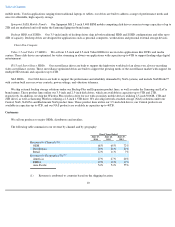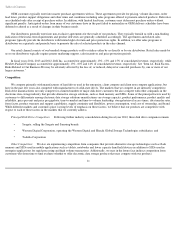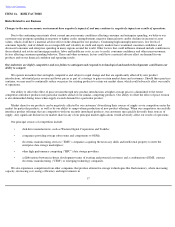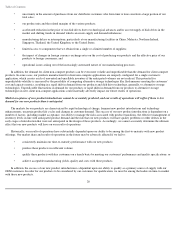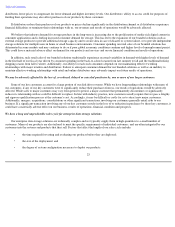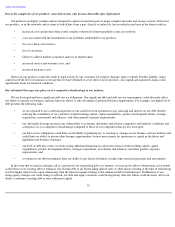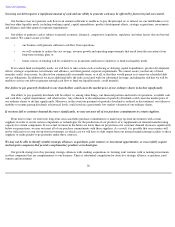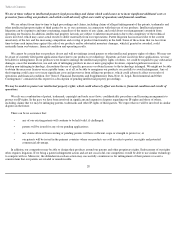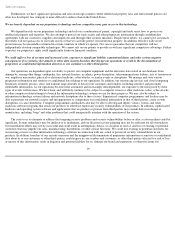Seagate 2013 Annual Report Download - page 22
Download and view the complete annual report
Please find page 22 of the 2013 Seagate annual report below. You can navigate through the pages in the report by either clicking on the pages listed below, or by using the keyword search tool below to find specific information within the annual report.
Table of Contents
• any impairments in goodwill or other long-lived assets;
• announcements of new products, services or technological innovations by us or our competitors; and
• adverse changes in the performance of our products.
As a result, we believe that quarter-to-quarter comparisons of our revenue and results of operations may not be meaningful, and that these
comparisons may not be an accurate indicator of our future performance. Our results of operations in one or more future quarters may fail to
meet the expectations of investment research analysts or investors, which could cause an immediate and significant decline in the trading price of
our ordinary shares.
If we fail to predict demand accurately for our products in any quarter, we may not be able to recapture the cost of our investments.
Our industry operates primarily on quarterly purchasing cycles, with much of the order flow in any given quarter typically coming at the
end of that quarter. Our manufacturing process requires us to make significant product-specific investments in inventory in each quarter for that
quarter's production. Since we typically receive the bulk of our orders late in a quarter after we have made our investments, there is a risk that
our orders will not be sufficient to allow us to recapture the costs of our investment before the products resulting from that investment have
become obsolete. We cannot assure you that we will be able to accurately predict demand in the future.
Our revenues in any quarter are substantially dependent upon customer orders in that quarter. We attempt to project future orders based in
part on estimates from our major customers. Our customers' estimated requirements are not always accurate and we therefore cannot predict our
quarterly revenues with any degree of certainty. In addition, we derive a portion of our revenues in each quarter from a number of relatively
large orders. If one or more of our major customers decide to defer a purchase order or delays product acceptance in any given quarter, this is
likely to result in reduced total revenues for that quarter.
The difficulty in forecasting demand also increases the difficulty in anticipating our inventory requirements, which may cause us to over-
produce finished goods, resulting in inventory write-offs, or under-produce finished goods, adversely affecting our ability to meet customer
requirements and our market share. Additionally, the risk of inventory write-offs could increase if we were to continue to hold higher inventory
levels. We cannot be certain that we will be able to recover the costs associated with increased inventory.
Other factors that may negatively impact our ability to recapture the cost of investments in any given quarter include:
• the impact of variable demand and an aggressive pricing environment for disk drives;
• the impact of competitive product announcements and possible excess industry supply both with respect to particular disk drive
products and with respect to competing alternative storage technology solutions such as SSDs in tablet, notebook and enterprise
compute applications;
• our inability to reduce our fixed costs to match sales in any quarter because of our vertical manufacturing strategy, which means
that we make more capital investments than we would if we were not vertically integrated;
• dependence on our ability to successfully qualify, manufacture and sell in increasing volumes on a cost-effective basis and with
acceptable quality our disk drive products, particularly the new disk drive products with lower cost structures;
19



